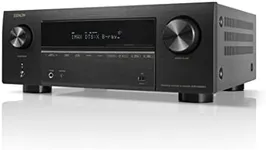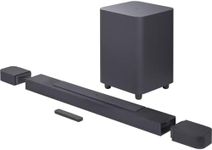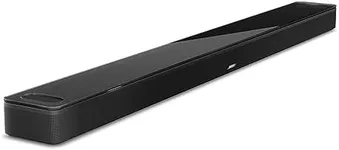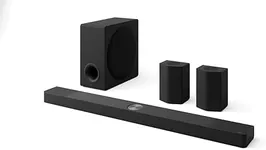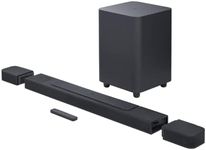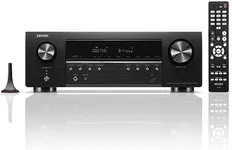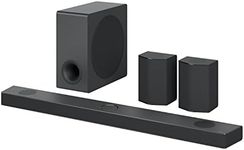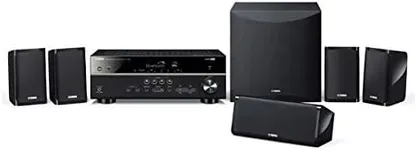Buying Guide for the Best Surround Sound Systems
Choosing a surround sound system can greatly enhance your home entertainment experience, making movies, music, and games feel more immersive. The right system for you depends on your room size, listening habits, and how you plan to use it. It's important to understand the main features and specifications so you can match them to your needs and space, ensuring you get the best sound quality and enjoyment.Number of ChannelsThe number of channels refers to how many separate audio signals the system can produce, which usually translates to the number of speakers. Common setups include 5.1, 7.1, and even higher. A 5.1 system has five speakers and one subwoofer, which is great for most living rooms and provides a solid surround experience. A 7.1 system adds two more speakers for even more immersive sound, ideal for larger rooms or dedicated home theaters. If you have a small space or want something simple, a 2.1 or 3.1 system might be enough. Think about your room size and how much immersion you want—more channels generally mean a fuller surround effect, but also require more space and setup.
Speaker Type and PlacementSurround sound systems can come with different types of speakers, such as bookshelf, floor-standing, satellite, or in-wall speakers. The type affects both the sound quality and how you can arrange them in your room. Bookshelf and satellite speakers are compact and easier to place, while floor-standing speakers offer bigger sound but need more space. In-wall or ceiling speakers are great for a clean look but require installation. Consider your room layout and whether you want visible speakers or a more discreet setup. Proper placement is key to getting the best surround effect, so make sure the system you choose fits your space and aesthetic preferences.
Audio Formats SupportedAudio formats like Dolby Digital, DTS, and newer ones like Dolby Atmos or DTS:X determine how the system processes and delivers surround sound. Basic systems support standard formats, which are fine for most TV and movie content. Advanced formats like Atmos add height channels for a more 3D sound experience, which is great for newer movies and games. If you want the latest immersive sound, look for systems that support these advanced formats, but if you mostly watch regular TV or older movies, standard formats will suffice.
Connectivity OptionsConnectivity refers to how you connect your devices to the surround sound system. Common options include HDMI, optical, Bluetooth, and Wi-Fi. HDMI is the most versatile and supports the best audio quality, especially for modern TVs and streaming devices. Optical is also good for high-quality sound but has some limitations with newer formats. Bluetooth and Wi-Fi allow for wireless streaming from phones or tablets, which is convenient for music. Think about what devices you want to connect—if you have a lot of modern equipment, prioritize HDMI and wireless options for flexibility.
Subwoofer PerformanceThe subwoofer handles the low-frequency sounds, like deep bass in music or explosions in movies. Subwoofers come in different sizes and power ratings, which affect how much bass you get. Larger, more powerful subwoofers deliver deeper, more impactful bass, which is great for big rooms or if you love action movies and music with strong bass. Smaller subwoofers are better for apartments or if you prefer a more balanced sound. Consider your room size and how much bass you enjoy—too much bass in a small room can be overwhelming, while too little in a big room can feel flat.
Ease of Setup and CalibrationSome surround sound systems are easier to set up than others. Systems with wireless speakers or automatic calibration features can save you time and effort, especially if you're not comfortable with technical setups. Automatic calibration uses a microphone to adjust the sound for your room, ensuring the best possible audio. If you want a hassle-free experience, look for systems that advertise easy setup or include calibration tools. If you enjoy tweaking settings, a more manual system might give you more control.

